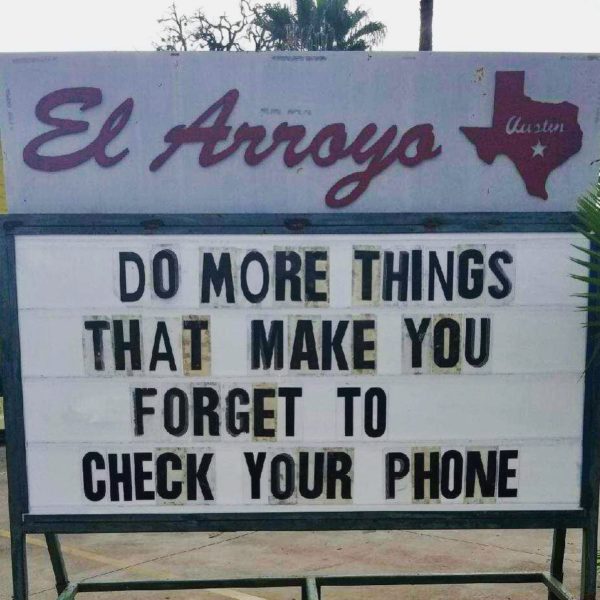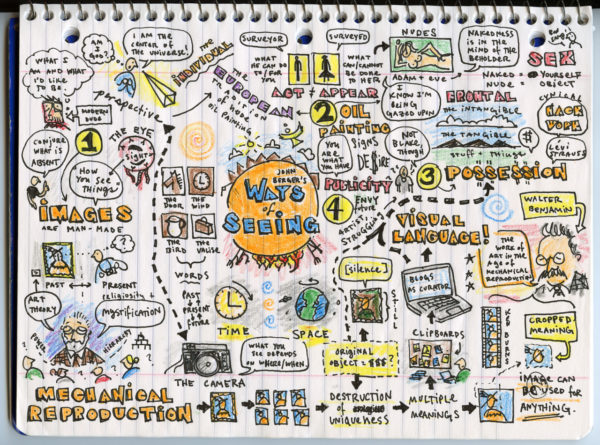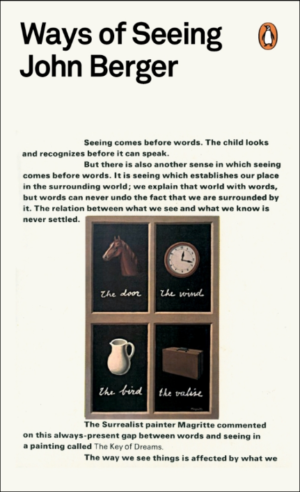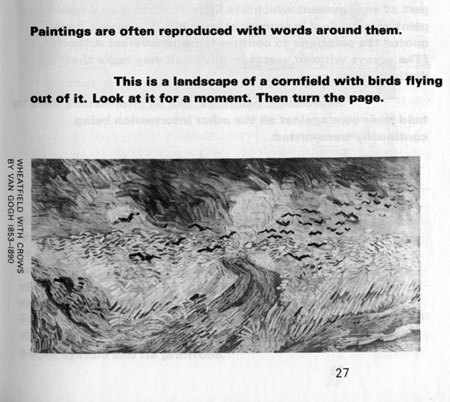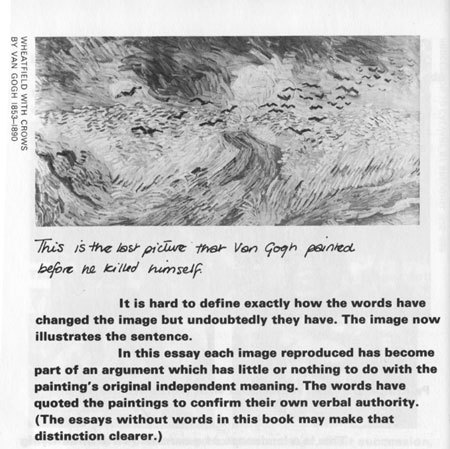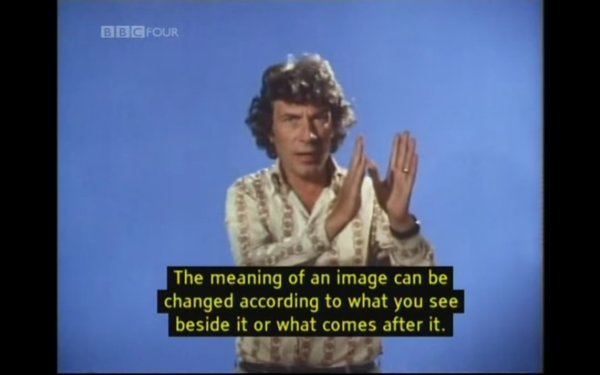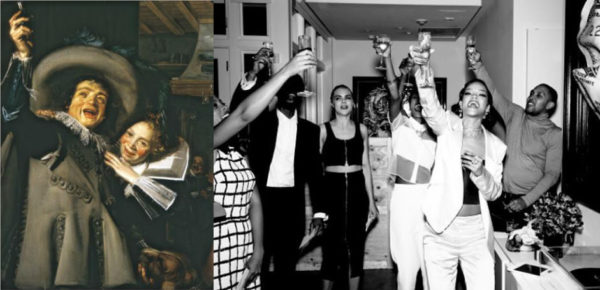I love how I posted eleven hundred words yesterday, and the El Arroyo sign does it with only eleven.
You don’t have to live in public
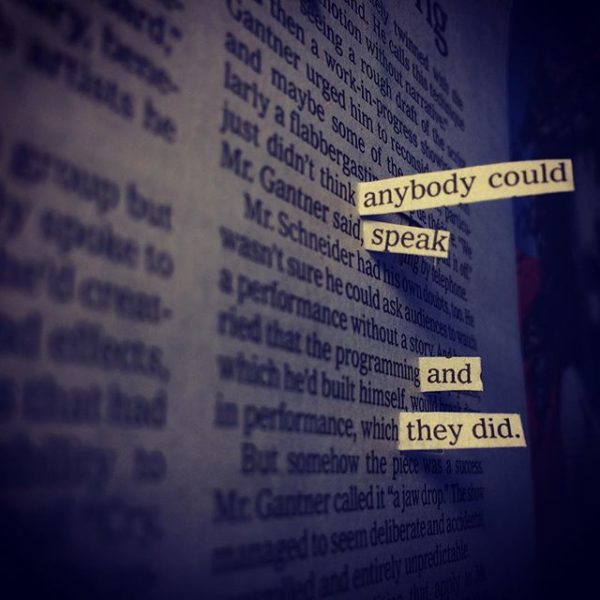
My book Show Your Work! was an attempt to answer questions my readers had asked me about self-promotion: “How do I get my stuff out there? How do I get noticed? How do I find an audience?” It is, as it says on the cover, a book about how to get discovered.
(Nowhere in the text do I address the question of why anyone should want to get discovered. There’s a little bit of that in the new book and chapter 6 of Steal Like An Artist: “Enjoy your obscurity while it lasts. Use it.”)
It isn’t a book about living in public, it’s a book about working in public. It is, I think, about sharing your work with intention, and using the technology available to you to connect directly with the audience you seek.
I tried very hard in that book, when it came to social media, to be platform agnostic, to emphasize that social media sites come and go, and to always invest first and foremost in your own media. (Website, blog, mailing list, etc.)
I still stand by that advice, but if I re-wrote the book now, I would encourage artists to use much more caution when it comes to using social media websites like Facebook, Twitter, and Instagram.
It seems ridiculous to say, but 2013, the year I wrote the book, was a simpler time. Social media seemed much more benign to me. Back then, the worst I felt social media did was waste your time. Now, the worst social media does is cripple democracy and ruin your soul.
I’ve just got finished reading Jaron Lanier’s 10 Reasons for Deleting Your Social Media Accounts Right Now. It’s not a particularly well-written book (Franklin Foer’s review is worth reading — he calls it “less polished” than Lanier’s other books and, even, “hokey”) but it has an important message. And I can’t say I disagree with any of the points, especially the last one, in which Lanier argues that the social media machine “hates your soul.” Here’s Foer, summarizing:
He worries that our reliance on big tech companies is ruining our capacity for spirituality, by turning us into robotic extensions of their machines. The companies, he argues, have no appreciation for the “mystical spark inside you.” They don’t understand the magic of human consciousness and, therefore, will recklessly destroy it.
This was a point, I think, made much better in his earlier book, You Are Not A Gadget, which contained a list of things “you can do to be a person instead of a source of fragments to be exploited by others”:
- Don’t post anonymously unless you really might be in danger.
- If you put effort into Wikipedia articles, put even more effort into using your personal voice and expression outside of the wiki to attract people who don’t yet realize that they are interested in the topics you contributed to.
- Create a website that expresses something about who you are that won’t fit into the template available to you on a social networking site.
- Post a video once in a while that took you one hundred times more time to create than it takes to view.
- Write a blog post that took weeks of reflection before you heard the inner voice that needed to come out.
- If you are twittering, innovate in order to find a way to describe your internal state instead of trivial external events, to avoid the creeping danger of believing that objectively described events define you, as they would define a machine.
It’s about pushing against these mediums and using them in a way counter to the way they’d like you to use them.
Another book I might recommend to writers and artists worried about their social media usage is Cal Newport’s Deep Work. (Especially the second half.) Newport also wrote a popular NYTimes Op-ed, “Quit Social Media. Your Career May Depend on It” and has given a TEDx talk called, “Why You Should Quit Social Media.”
Two caveats before you read Deep Work:
1) I’m not sure about the terms “deep” and “shallow”. Often in my work, what might seem “shallow” is often what leads to what is “deep”
2) Newport is an academic — he makes his primary living teaching computer science at a university, so he already has a built-in network and a self-contained world with clear moves towards achievement. People doing creative work have neither of those things. (For that matter, Jaron Lanier is already famous and well-respected and has a good gig at Microsoft.) One must always be beware of the advice-giver’s context.
I was struck, in Warren Ellis’s last email newsletter, how much he emphasized solitude, and carving out disconnected time for working:
The trick, for me, is carving out time for things and trying to do them with some wit…. I am not ready for the world until I’ve had my 45 minutes with four espressos in the back garden with earbuds in…. I spend a lot of time on my own, and mostly in my office. You can emulate these obvious role-model traits by excavating yourself a cave in your back garden or taking over a room in your apartment, fitting it with uncomfortably bright lights and way too many screens, filling all the spaces with books and skulls, playing nothing but music that sounds like it’s emanating from a dead moon, and waiting for everyone to leave you alone forever, and then dying in seclusion and being eaten by cats.
And this terrific advice he gave to people worrying about living online:
You don’t have to live in public on the internet if you don’t want to. Even if you’re a public figure, or micro-famous like me. I don’t follow anyone on my public Instagram account. No shade on those who follow me there, I’m glad you give me your time – but I need to be in my own space to get my shit done. You want a “hack” for handling the internet? Create private social media accounts, follow who you want and sit back and let your bespoke media channels flow to you. These are tools, not requirements. Don’t let them make you miserable. Tune them until they bring you pleasure.
I still find value in being on Twitter (just yesterday I learned about a new-to-me artist from a follower) but it is increasingly hard to justify much time spent there and on other social media sites, like Instagram. (I have not deleted my Facebook account, but I rarely sign in there.) That’s why I continue to write here every day and keep up my weekly newsletter, both of which produce better thinking and better work from me and give me a stronger, more deeper connection to my audience.
I’ll be writing more about the need to disconnect in my next book, so stay tuned…
John Berger’s Ways Of Seeing
I’m reading John Berger’s last published book, Confabulations, and it’s reminding me what an impact his book, Ways of Seeing, had on me when I first read it a decade ago. (I drew this map in 2008.)
Berger was a hero in my person pantheon of “writers who draw”:
Because he had been a painter, Berger was always a visual thinker and writer. In conversation with the novelist Michael Ondaatje he remarked that the capabilities of cinematographic editing had influenced his writing. He identified cinema’s ability to move from expansive vistas to close-up shots as that to which he most related and aspired.
One of the things Berger’s work taught me early on was the power of captions: How simply changing the text underneath an image radically altered the image’s message. Here’s an example from the book:
Because I first discovered it in book form, it took me a while to even realize that it was based on the 1972 BBC series of the same name. (It was Berger’s reaction to Kenneth Clarke’s Civilisation series, which had a more traditional view of Western art.) At the momest, all of the episodes are available on Youtube:
For a fun update on Berger for the social media age, see Ben Davis’s essay: “Ways of Seeing Instagram”:
Isn’t it striking that the most-typical and most-maligned genres of Instagram imagery happen to correspond to the primary genres of Western secular art? All that #foodporn is still-life; all those #selfies, self-portraits. All those vacation vistas are #landscape; art-historically speaking, #beachday pics evoke the hoariest cliché of middle-class leisure iconography… Technology has so democratized image-making that it has put the artistic power once mainly associated with aristocrats—to stylize your image and project yourself to an audience as desirable—into everyone’s hands.
The enormity of their stupidity is overwhelming
Werner Herzog on chickens, or, how I feel signing into social media.
Like-minded vs. like-hearted
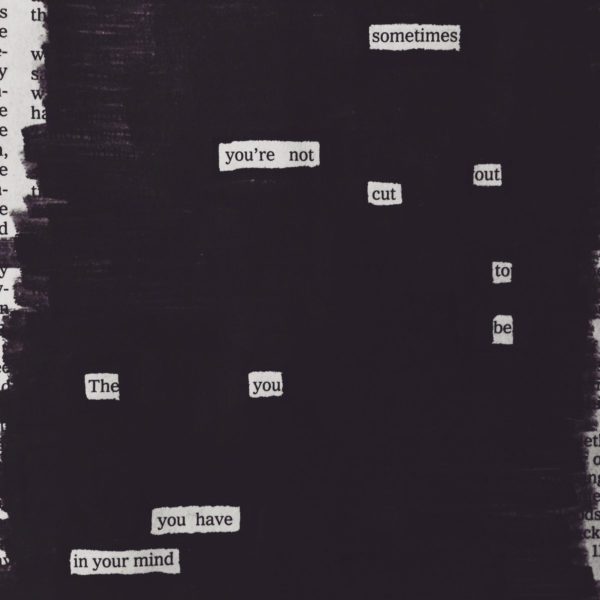
A reader sent me a note a few days ago remarking that while he didn’t share my politics, he felt he was able to really listen to what I have to say, rather than tuning out what he didn’t want to hear. He suspected it had to do with the creative spirit, the connection you feel with another person you know is trying their best to bring new, beautiful things into the world.
I immediately thought of my friend Alan Jacobs, who writes in his book, How To Think, that if you really want to explore ideas in an environment conducive to good thinking, you should consider hanging out with “people who are not so much like-minded as like-hearted,” people who are “temperamentally disposed to openness and have habits of listening.”
I loved this idea so much it was one of the first things I asked Alan about when I interviewed him last year at Bookpeople. Here is his full response:
You know what it’s like to be around people who share your core convictions… and yet you can’t stand to be around them. In one sense, they’re your “in” group, in another sense, it’s like, “When can I leave this party?” It can be stultifying. And it closes you off to spend all your time around people who may be like-minded, but whose spirit is unhealthy. They’re just not fun people to be around.
I started thinking about the fact that back when Twitter was more or less inhabitable by human beings (some years ago), I met a number of people on Twitter, including [you], and then at one point I decided it was just getting too poisonous, but I didn’t want to lose all those friends, so I made a private Twitter account.
There’s about 100 people there. When I was deciding who do I want to be talking with on social media, I realized it wasn’t necessarily the people who agreed with me about all of my religious beliefs or political beliefs. What I wanted was people who were generous. And kind. And caring. And thoughtful. So that when I said something, they would think about it, rather than just simply react.
That’s how I chose my company on social media. I chose to be around people whose disposition and whose character I found trustworthy. So that when I’m with them, I feel good about being in their presence. And I don’t always feel good about being in the presence of people who might, you know, if you made a list of 100 core beliefs, they might line up more, but they’re just not people I want to spend much time with.
I really think that matters. If you trust in the character and the generosity of people, one of the things you can do is you can take risks in your thinking a little bit. You can say, “Hey, I’m not sure about this, let me try this idea out on you.” You can count on them giving you an honest but also charitable response. If you can find a body of people like that… you’re incredibly blessed. It’s a fantastic thing to have. Not everybody has that. When you do have it, it not only makes you a happier person, I think it makes you a better thinker, as well.
More in How To Think.
